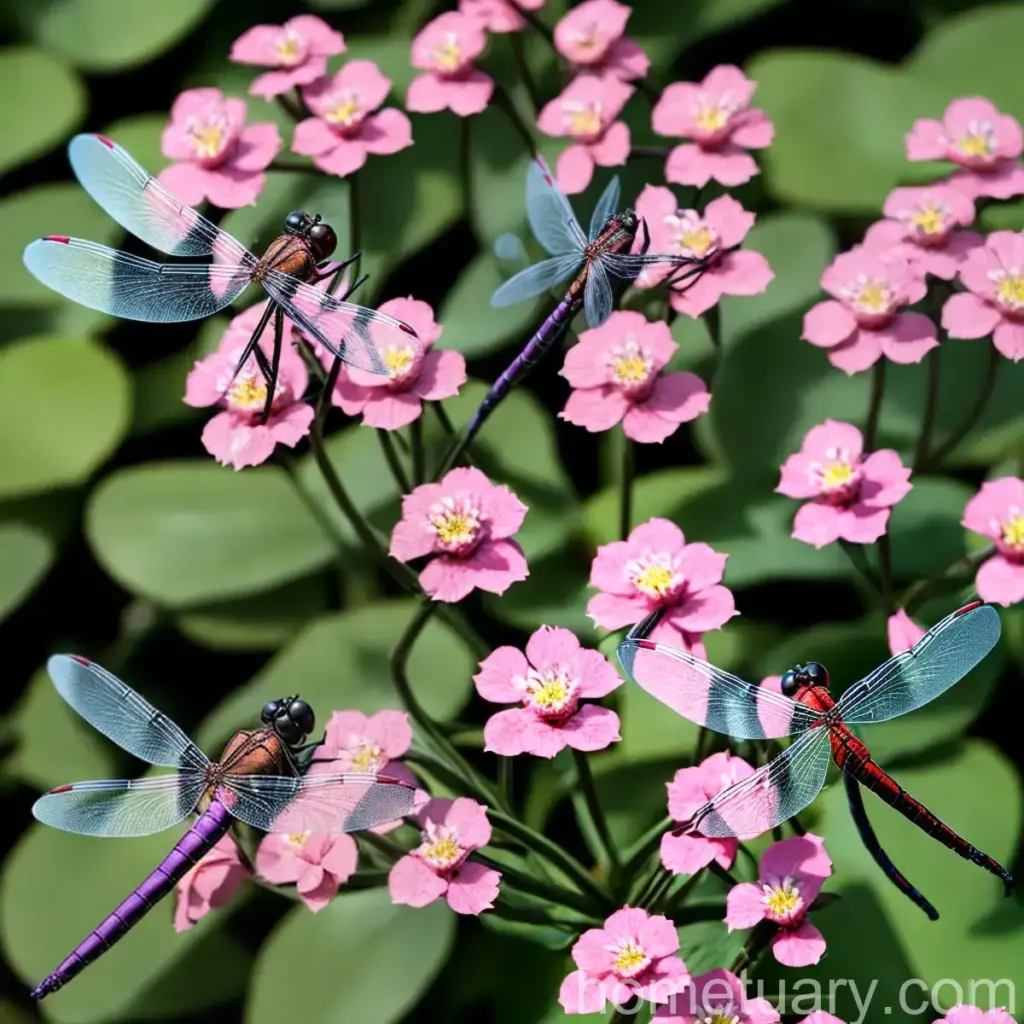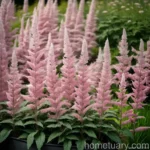Everything You Need to Know About bergenia (Bergenia DRAGONFLY ANGEL KISS)
What is berbernia (Bergenia DRAGONFLY ANGEL KISS)?
Bergenia is a genus of ten species of flowering plants in the family Saxifragaceae, native to central Asia, from Afghanistan to China and the Himalayas. The Bergenia DRAGONFLY ANGEL KISS is a specific variety within this genus known for its stunning foliage and flowers. This variety, in particular, is prized for its compact habit, dark green leaves with distinct red edges, and bright magenta flowers, making it a beautiful addition to any garden or landscape.
Key Takeaways – bergenia (Bergenia DRAGONFLY ANGEL KISS)
- Bergenias: A diverse and visually appealing genus of flowering plants, known for their ornamental value and hardiness.
- Bergenias Dragonfly Angel Kiss: A specific variety of bergenias cherished for its compact growth, striking foliage, and vibrant flowers.
- Bergenia plants: Bergenias are valued for their versatility in landscaping and garden design, offering a range of colors, textures, and seasonal interest.
- Dragonfly Angel Kiss variety: Characterized by its dark green leaves with red edges and magenta flowers, the Dragonfly Angel Kiss variety brings a touch of elegance to any setting.
- Bergenias for landscaping: Ideal for various landscaping applications, bergenias are reliable, low-maintenance plants that can thrive in diverse environments.
Culture
Uses
Bergenia plants, including the Dragonfly Angel Kiss variety, are widely used for their ornamental value in garden beds, borders, containers, and as ground cover. Their vibrant foliage and flowers add color and visual interest to various settings, making them popular choices for landscaping and horticultural projects.
Water
Bergenias generally prefer moist, well-drained soil and benefit from regular watering. However, they are also known for their drought tolerance once established, making them suitable for a range of water conditions, from wet areas to drier landscapes.
Sunlight
For best performance, bergenias, including the Dragonfly Angel Kiss variety, thrive in partial to full sun. They can also tolerate partial shade, making them versatile options for different light conditions in gardens and landscapes.
Fertilizer
Applying a balanced, slow-release fertilizer in the spring can promote healthy growth and vibrant blooms in bergenias. It is essential to follow the recommended application rates and avoid over-fertilization to prevent potential issues.
Soil
Bergenias prefer fertile, well-drained soil with a slightly acidic to neutral pH. They can adapt to different soil types, including clay and loamy soils, but ensuring good drainage is crucial for their overall health and vigor.
Pruning
Bergenias generally require minimal pruning. Regular deadheading of spent flowers can encourage continuous blooming and maintain a tidy appearance. Additionally, removing any damaged or discolored foliage can help promote overall plant health.
Propagation
Propagation of bergenias, including the Dragonfly Angel Kiss variety, can be achieved through division or from seeds. Dividing established clumps in the spring or early fall allows for the increase of plant numbers and rejuvenation of older specimens.
Container Popularity
Bergenias, particularly the Dragonfly Angel Kiss variety, are popular choices for container gardening due to their compact growth habit and ornamental foliage. They can be showcased in containers, adding visual appeal to patios, balconies, and other outdoor spaces.
Common Diseases
While bergenias are generally resilient plants, they can be susceptible to certain diseases and issues. Here are some common diseases and potential management strategies:
Disease Diagnosis
- Leaf Spot: Watch for the development of dark spots on the foliage, which may indicate a fungal infection. Proper sanitation and adequate air circulation can help prevent and manage leaf spot.
- Crown Rot: Examine the base of the plant for signs of rotting or discoloration, which can indicate crown rot. Avoid overwatering and ensure proper soil drainage to mitigate this issue.
Common Pests
Bergenias are relatively resistant to pests but may occasionally face challenges from the following:
- Slugs and Snails: These pests may feed on the foliage, leading to unsightly damage. Use physical barriers or organic controls to manage slug and snail populations.
- Aphids: Keep an eye out for aphids, particularly on new growth, and use targeted interventions such as insecticidal soaps if necessary.
Botanist’s Tips
- Mulching: Applying a layer of organic mulch around bergenias can help conserve soil moisture, suppress weed growth, and enhance the overall appearance of the planting area.
- Winter Protection: In colder climates, providing a layer of mulch or leaves around bergenias in the fall can offer protection from winter extremes and promote healthier growth in the following seasons.
- Fertilization Timing: Apply fertilizer to bergenias in the early spring, as they emerge from dormancy, to support robust growth and abundant flowering.
Fun Facts
- The genus name “Bergenia” was given in honor of Karl August von Bergen, an 18th-century German botanist and physician.
- Bergenias are commonly known as “elephant’s ears” due to the resemblance of their large, round leaves to the ears of an elephant.
- Some bergenias, including the Dragonfly Angel Kiss variety, may exhibit changes in foliage coloration during the cooler months, adding seasonal interest to the landscape.
Links to External Resources
To learn more about bergenias and the Dragonfly Angel Kiss variety, explore the following resources:
- Royal Horticultural Society: Bergenia
- Missouri Botanical Garden: Bergenia
- University of Maryland Extension: Bergenias in the Garden
In conclusion, bergenias, including the captivating Dragonfly Angel Kiss variety, contribute beauty and versatility to garden landscapes, offering a range of colors, textures, and hardiness. Whether used as ground cover, container specimens, or accents in mixed borders, these plants showcase a remarkable resilience and aesthetic charm that appeal to both novice and seasoned gardeners. With the right care and attention to their specific requirements, bergenias can thrive and enrich outdoor spaces with their captivating presence.















